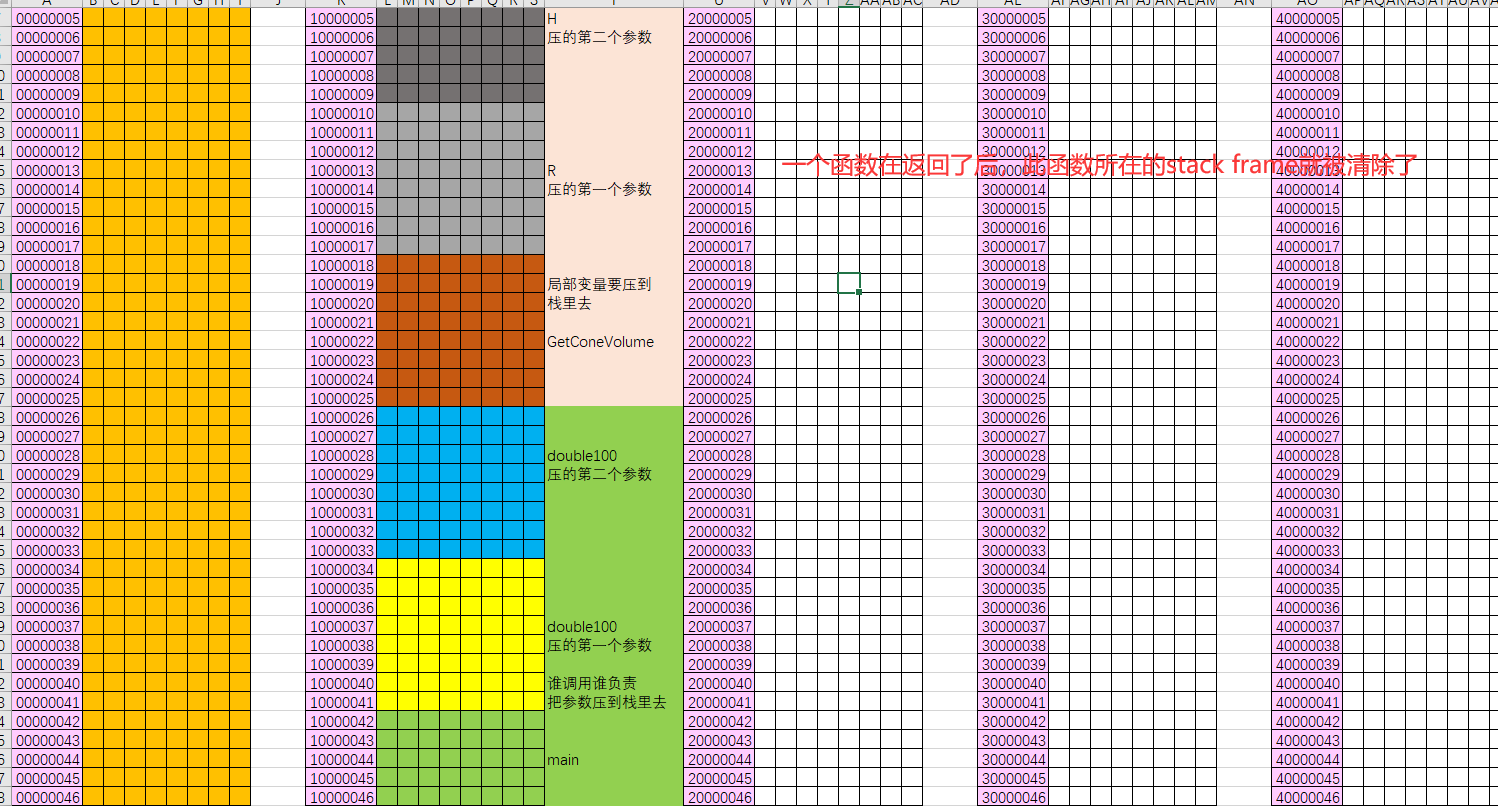方法的定义、调用与调试
一、构造器
静态构造器
不带参数的构造器
带参数的构造器
static void main(string[] args) { student stu = new student (2,"MR.OKAY");//传参数满足自定义构造器的需求 console.writeline(stu.id); console.writeline(stu.name); } class student { public int id; public string name; public student ( int initid , string initname) { this.id = intitid; this.name= initname; } }
构造器的内存原理
二、方法的重载
声明带有重载的方法
- 方法签名由方法的名称、类型形参的个数和它的每一个形参(按从左到右的顺序)的类型和种类(值、引用或输出)组成。方法签名不包含返回类型
- 实例构造函数签名由它的形参(按从左到右的顺序)的类型和种类(值、引用或输出)组成
- 重载决策(到底调用哪一个重载):用于在给定了参数列表和一组候选函数成员的情况下,选择一个最佳函数成员来实施调用
public int Add<T>(int a ,int b) { T t;//t的变量做什么事情,是在方法内部中的事了 return a+b ; } /*类型形参是用在泛型方法里的,未来会有一个类型T参与到我的方法中。类型形参是可以参与构成方法签名的*/ public int Add(int a, int b) //什么修饰符都不加的参数都是传值的 public int Add(ref int a, int b) //加上ref修饰的是传引用的 public int Add(out int a, int b) //输出参数 /*参数的种类也参与构成方法的签名的*/
三、方法的调用与栈
方法调用时栈内存的分配(对stack frame的分析)
class program { static void Main(string[] args) { double result =Calculator.GetConeVolume(100,100); } } class Calculator { public static double GetCircleArea(double r) { return Math.Pi*r*r ; } public static double GetCylinderVolume(double r, double h) { double a=GetCircleArea(r); return a*h; } public static double GetConeVolume(double r,double h) { double cv=GetCyclinderVolume(r,h); return cv/3; } }

方法调用时栈内存的分配(对stack frame的分析)